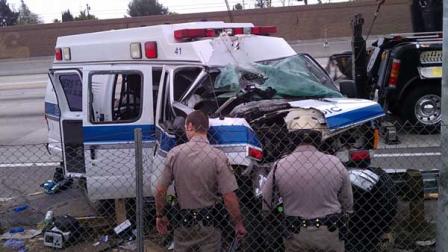4 Must-have Data Points for Dispatch-Billing Alignment and Maximum Reimbursement
The Culture of Safety in Ambulance Operations
There are many different aspects of safety in an EMS organization; vehicle operations, patient care and staff safety
Was this information valuable?

There are many different aspects of safety in an EMS organization; vehicle operations, patient care and staff safety. By far the area that causes the most injuries and fatalities is vehicle operations. It is estimated that 74% of EMS fatalities result from vehicle crashes.
When you drill down and analyze the data, it becomes evident that driver behavior was a leading cause for these crashes. Failure to use restraint systems in the front compartment was cited in 21% of the fatal crashes. That was a conscious decision by a crew member to disregard policy, state law and common sense. In addition, what message is this sending to the public when an ambulance crew member is observed not wearing a seat belt?
The ambulance manufactures have finally recognized crew safety is becoming a priority when designing their vehicles. Until the patient compartment conforms to the Federal Motor Vehicle Safety Standards, we still have a long way to go in building a safe ambulance that rivals our European colleagues. In the meantime we must be proactive in preventing the crash in the first place.
Developing a culture of safety is not an arduous effort. There are many different tactics to accomplish this without having to totally reinvent your operation. You will also recognize a sizable cost savings the more in depth and comprehensive your program is.
With the leading cause of negligent lawsuits ambulance crashes, insurance companies recognize safe fleet operators and reward them with lower premiums. Hence the opposite is true. Excessive preventable crashes will result in increased rates and greater chances of legal litigation. The priority here should not be financially driven, protecting lives is.
Some simple steps to start a culture of safety begin right at hiring. One EMS Operations Manager told me they hire first for behavior then for competencies. A quick look at an applicant’s driving record is a good start, but don’t end it there. All staff should have their driving record evaluated annually for moving violations and preventable crashes. Didactic and hands on training are crucial during orientation and if you have tenured staff with poor driving habits, remediate with the same training. Other key components are driving manuals, policies, safety committees, crash investigation board and vehicle monitoring devices that keep watch on your staff driving behavior all the time.
To ensure safety success and reduce your risk, a safety program must be a priority and always evolving in your operation. The cost of losses today is staggering not only in human tolls, but damaged reputation, credibility and public perception can hinder your success for years to come.
Related Posts
How EMS Agencies Can Reframe Need and Refocus Resources With Geospatial Analytics
How To Minimize Radio Chatter and Reduce Guesswork With Smarter Dispatch Resource Management
ZOLL Pulse Blog
Subscribe to our blog and receive quality content that makes your job as an EMS & fire, hospital, or AR professional easier.
ZOLL Pulse Blog
Subscribe to our blog and receive quality content that makes your job as an EMS, fire, hospital, or AR professional easier.




